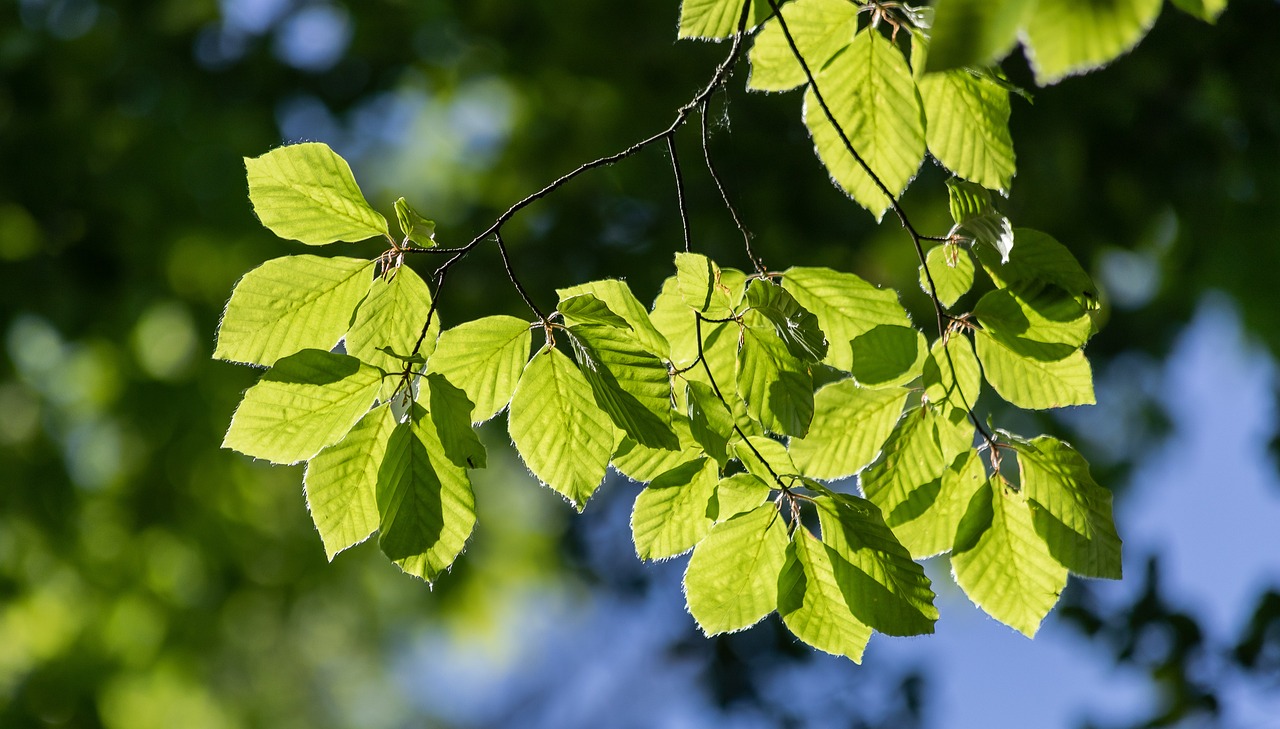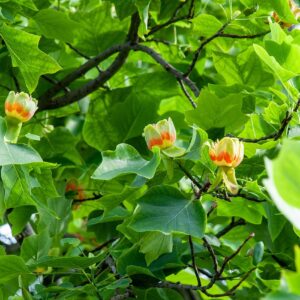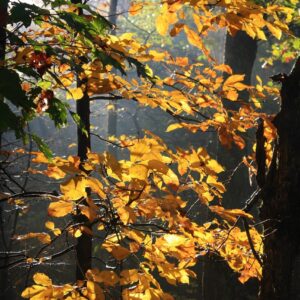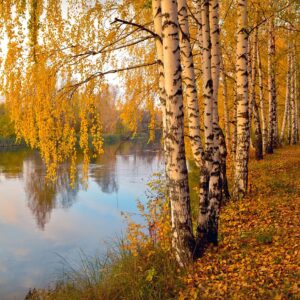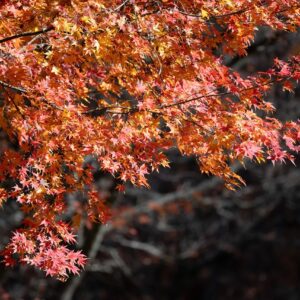American Hornbeam (Carpinus caroliniana), also known as Blue Beech or Ironwood, is a deciduous tree native to the eastern United States. It is valued for its distinctive bark, attractive foliage, and adaptability. American Hornbeam (Carpinus caroliniana) is a versatile and attractive tree that adds beauty and interest to a variety of landscapes. Its unique bark, appealing foliage, and adaptability make it a valuable addition to gardens, woodlands, and natural settings.
Appearance:
Size: American Hornbeam typically grows 20-30 feet (6-9 meters) tall, with a spread of 20-25 feet (6-7.5 meters). It has a compact, rounded canopy with a dense, branching habit.
Leaves: The leaves are ovate to elliptical, about 2-5 inches (5-12 cm) long, with a finely serrated edge. They are dark green on the upper surface and lighter green underneath, with a somewhat crinkled or wavy texture. In the fall, the foliage turns yellow to orange, adding seasonal color.
Flowers: The flowers are small and inconspicuous, appearing in late spring (April to May). They are arranged in dangling catkins—long, slender clusters that can be up to 3 inches (7.5 cm) long. The flowers are not particularly showy but are interesting in their form.
Fruit: The fruit is a small, triangular nutlet enclosed in a winged, papery bract. These fruits mature in late summer to early fall and are not particularly ornamental but can attract birds.
Bark: The bark is one of the most distinctive features of the American Hornbeam. It is smooth and gray with a muscle-like, sinewy texture, giving it a unique appearance. As the tree matures, the bark can develop fine, shallow ridges.
Habitat: American Hornbeam is adaptable to a range of environments but is commonly found in moist, well-drained soils in woodlands, along stream banks, and in shady forest understories. It prefers rich, loamy soil but can tolerate various soil types. It is hardy in USDA Hardiness Zones 3 to 9.
Uses:
Ornamental: The American Hornbeam is valued for its attractive bark, foliage, and compact size. It is often used as a specimen tree, in shaded areas, or as part of a naturalized planting. It is also suitable for smaller gardens due to its manageable size.
Ecological: The tree provides habitat and food for various wildlife species. The nuts are eaten by birds and small mammals, while the dense canopy offers shelter for various creatures.
Woodworking: The wood of American Hornbeam is hard and dense, sometimes referred to as “Ironwood.” It is used for making tool handles, furniture, and other items that require durable wood.
Care:
Pruning: Prune American Hornbeam in late winter or early spring before new growth begins. Pruning helps maintain the shape of the tree and removes any dead or damaged branches. Light pruning after flowering can also be done to encourage a tidy appearance.
Watering: The tree prefers consistently moist soil but is relatively drought-tolerant once established. Regular watering during dry periods helps maintain its health.
Fertilizing: A balanced, slow-release fertilizer applied in early spring can support healthy growth. However, the tree is not overly demanding in terms of fertilization.
Pests and Diseases: American Hornbeam is generally resistant to pests and diseases but can occasionally be affected by issues such as leaf spot or scale insects. Regular monitoring and proper care can help manage these issues.

